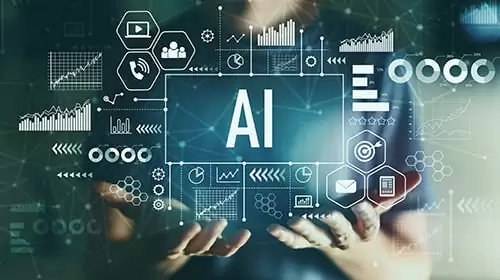Artificial intelligence (AI) has made great progress in recent years, revolutionizing various sectors and aspects of human life.
Within the AI domain, two major branches that have gained significant attention are conversational AI versus generative AI.
While both of these technologies involve natural language processing, they serve distinct purposes and possess unique characteristics.
In this blog post, we delve into the world of Conversational AI and Generative AI, exploring their differences, key features, and use cases.
What is Conversational AI
Conversational AI, as the name suggests, focuses on facilitating natural language conversations between humans and AI systems. Leverage technologies like Natural Language Understanding (NLU) and Natural Language Generation (NLG) to enable seamless interactions. Conversational AI services have several key characteristics and capabilities that enhance conversational skills:
Vocal recognition
- Conversational AI systems incorporate advanced algorithms to convert spoken language into textual form.
- It allows them to understand and process user inputs in the form of spoken or spoken commands.
Natural Language Understanding (NLU)
- Conversational AI relies on sophisticated NLU techniques to understand and interpret the meaning behind user queries or statements.
- By analyzing the context, intent and entities within user input, conversational AI can extract relevant information and formulate appropriate responses.
Dialog management
- Conversational AI systems use robust dialogue management algorithms to keep conversational and context sensitive.
- These algorithms allow the AI system to understand and respond to user inputs in a natural and human way.
Natural Language Generation (NLG)
- The systems of artificial intelligence conversational models employ NLG techniques to generate human-like responses in real time.
- Leveraging pre modelsdefinites, machine learning models, or even neural networks, these systems can generate contextually appropriate and meaningful responses to user questions or prompts.
Conversational AI applications
- Virtual Assistants: Conversational AI powers popular virtual assistants like Apple's Siri, Amazon's Alexa, and Google Assistant, which provide personalized assistance and perform tasks based on user commands.
- Customer Service: Many organizations deploy chatbots and voice bots powered by conversational AI to provide automated customer service, handle common questions, and guide users through self-service options.
- Language Translation: Conversational AI can facilitate real-time translation between different languages, breaking down language barriers and enabling global communication.
- Voice-activated interfaces: By integrating conversational AI into devices and systems, users can interact with them via voice commands, enabling hands-free control and increased accessibility.
What is Generative AI
Generative AI, on the other hand, focuses on creating new and original content using machine learning algorithms. Leverage techniques like the deep learning and neural networks to generate realistic and creative output. Let's dive into the key features and capabilities of Generative AI.
Content generation
- Generative AI models have the ability to create different forms of content, including text, images, music, and even video.
- By analyzing patterns and structures in training data, Generative AI can generate new content that aligns with the patterns it has learned.
Creative versatility
- Generative AI is known for its creative versatility, as it can produce unique and new results based on the data it has been trained on.
- The ability to generate original content that exhibits creativity and diversity makes generative AI a powerful tool in various creative domains.
Learn from data
- Generative AI algorithms learn from large datasets to improve the quality and diversity of generated outputs.
- By training on large and diverse datasets, AI models can better understand the underlying patterns and generate more realistic models
What is the difference between Conversational AI and Generative AI
Conversational AI and Generative AI have many differences ranging from the goal to the application of the two technologies. The key difference between conversational AI and generative AI is that it is used to mimic human conversations between two entities. The other is to generate new and different types of content. ChatGPT, for example, uses both Conversational AI and Generative AI.
Conclusion
In summary, Conversational AI and Generative AI are two distinct branches of AI with different goals and applications. Conversational AI focuses on enabling human-like conversations and delivering context-sensitive responses, while generative AI focuses on creating content and generating new results. Both technologies have unique features and capabilities that contribute to their respective domains and play crucial roles in the advancement of AI applications.
Ercole Palmeri
